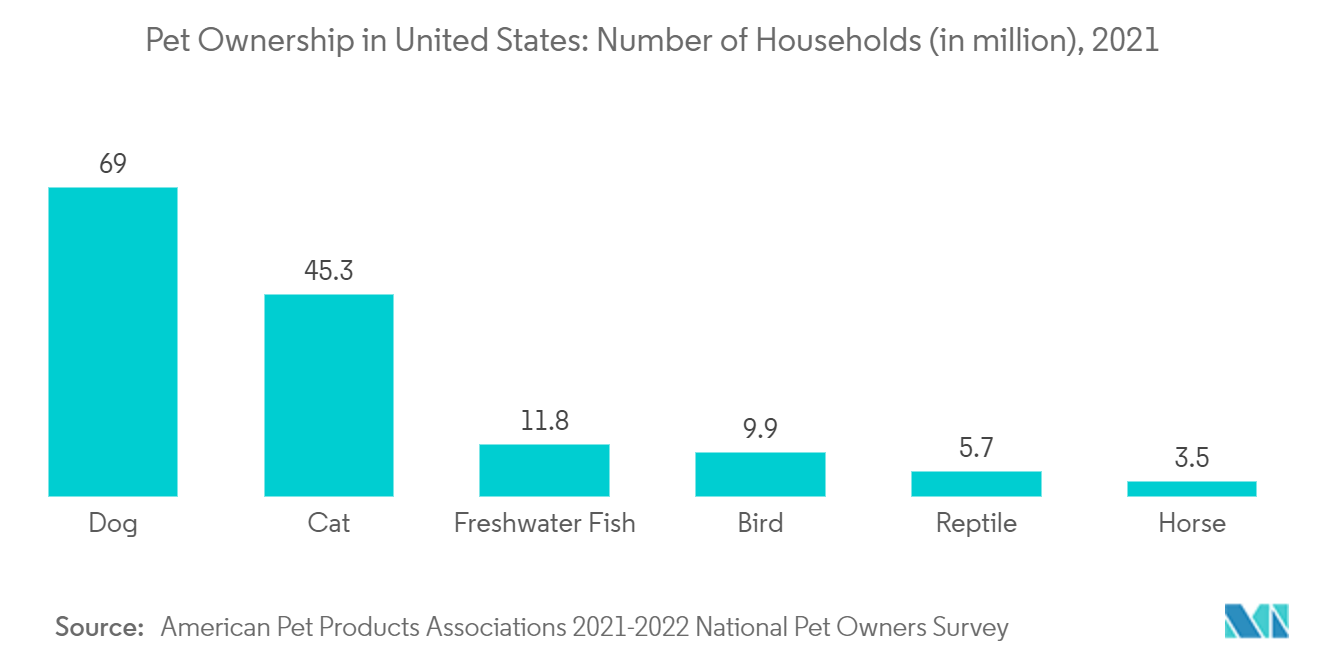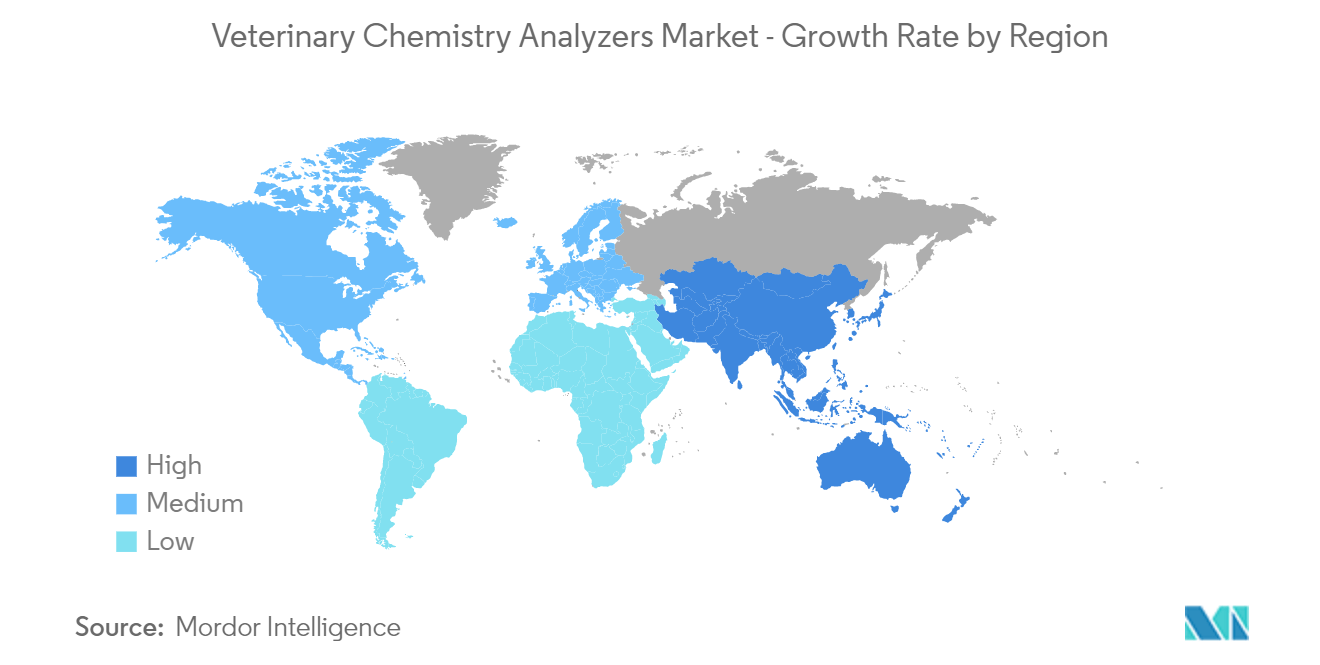Market Trends of Veterinary Chemistry Analyzers Industry
Companion Animals Segment are Expected to Witness Growth Over the Forecast Period
- The companion animal segment is poised for significant growth, driven by the increasing number of pet adoptions and rising healthcare spending by pet owners. Additionally, the introduction of new diagnostic and treatment products by market players is expected to play a significant role in the segment's growth.
- One such product is the veterinary chemistry analyzer, which provides valuable information about an animal's health, gathered by collecting and analyzing blood samples or urine. The analyzer conducts a complete blood count (CBC) and blood chemistry tests to analyze the chemical components in the blood. Standard blood serum tests evaluate organ function, electrolyte status, hormone levels, and more.
- A survey published by the American Veterinary Medical Association (AVMA) in November 2021 revealed that the population of dogs and cats has increased in recent years, as has the percentage of households owning them. As of 2021, there were approximately 83.7 million dogs, representing 1.46 dogs per household.
- In Germany, 47% of households owned pets in 2021, with a total of 34.7 million dogs, cats, small animals, and ornamental birds kept by the population. The high rate of pet adoption is likely to propel the use of veterinary analyzers for evaluating the health of older pets, those with vomiting, diarrhea, or toxin exposure, those receiving long-term medications, and for assessing their health before undergoing anesthesia.
- Moreover, the launch of technologically advanced pet analyzers is expected to further fuel the segment's growth during the forecast period. For example, in December 2022, EKF Diagnostics, a global in vitro diagnostics company, launched a new version of its Lactate Scout analyzer designed specifically for veterinary settings. The Lactate Scout Vet includes species selection for dogs, horses, pigs, and cattle, making it suitable for use in both small and large animal practices. Additionally, in May 2021, PetDx, a company dedicated to improving pet health through genomics, launched OncoK9, a multi-cancer early detection (MCED) test that enables veterinarians to detect cancer in dogs earlier with a simple blood draw.
- In summary, the high rate of pet adoption and the growing availability of pet analyzers are expected to fuel the companion animal segment's growth in the coming years.

North America is Expected to Hold a Significant Market Share Over the Forecast Period.
North America is expected to hold a significant market share owing to factors such as rising pet adoption and increasing per capita animal healthcare expenditure, high prevalence of various animal diseases, and the strong presence of industry players in the region.
The rising number of pet insurance in the region is also expected to increase the market growth. For instance, according to the 2022 statistics published by the Insurance Information Institute, it has been observed that in the United States 3.9 million pets were insured at the end of 2021, with an increase of 20% compared to the previous year. In addition, California (19.3%), New York (8.4%), and Florida (6.1%) were the three states with the highest percentage of insured pets. The same source reported that in Canada 432,533 pets were insured at the end of 2021, with an increase of 22.7% compared to the previous year. Thus, the growing pet adoption is leading to an increase in focus on the availability of pet insurance. Due to the availability of pet insurance, pet owners are spending more on pet health care. This is creating opportunities for the development and availability of veterinary chemistry analyzers for better treating pets.
Furthermore, an article published in the Journal of Veterinary Diagnostic Investigation in May 2021 stated that the Ontario Animal Health Network (OAHN) is an innovative disease surveillance program created to enhance preparedness, early detection, and response to animal disease in Ontario. Most veterinary hospitals have requirements for assessing animal blood chemistry values, either on-site or via a local veterinary diagnostic laboratory. Such initiatives in the region are expected to create awareness among pet and animal caretakers for veterinary checkups which are estimated to propel the market growth during the forecast period.


